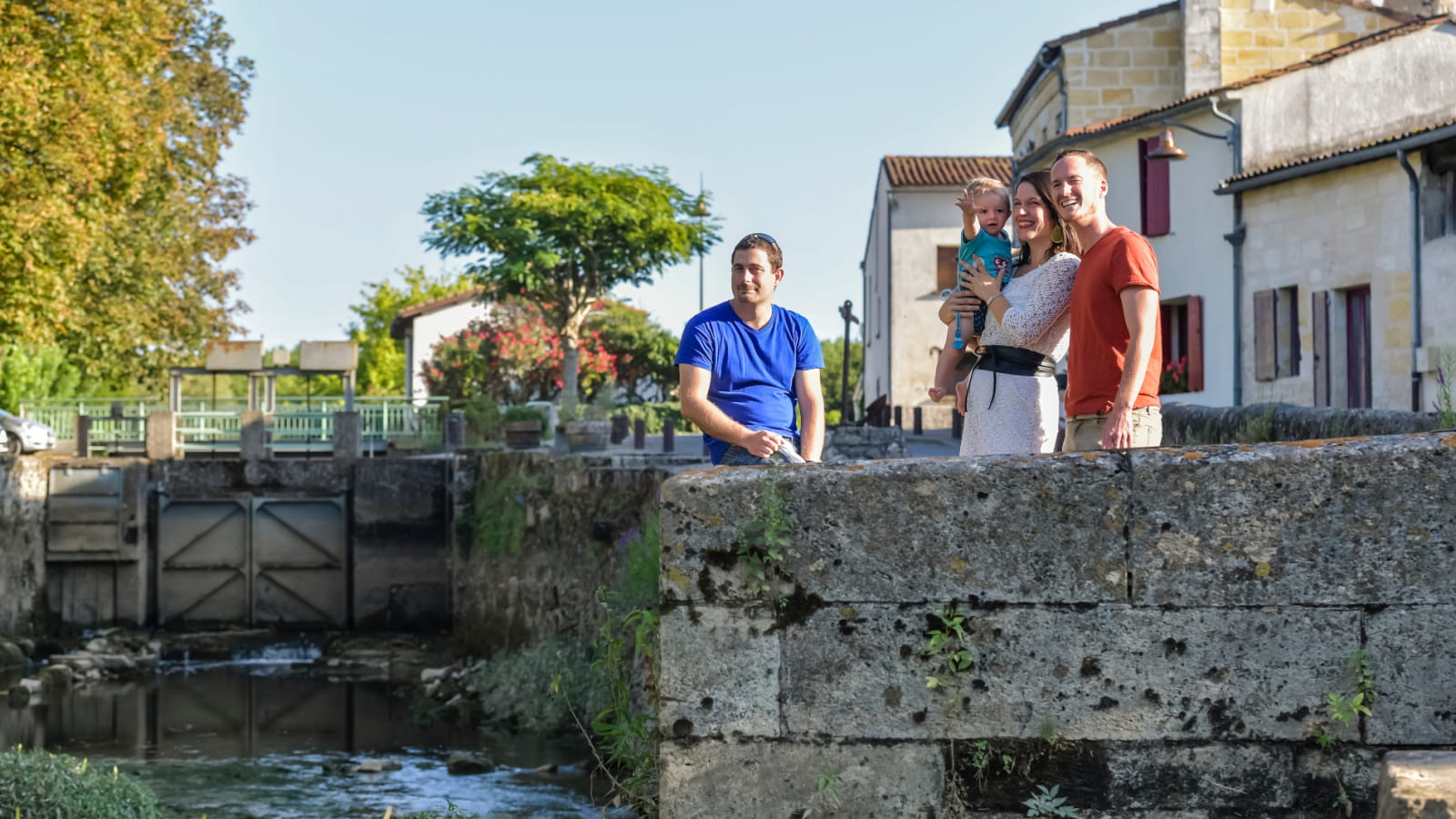
Villages on the banks of Garonne
On the left bank of the river, in the heart of the bocage of Garonne, discover the villages of Cadaujac, Isle-Saint-Georges, Beautiran, Ayguemorte-les-Graves and Saint-Médard.
Cadaujac
The city with four portsOn five kilometres of river banks, Cadaujac has four ports that were very busy at the time of the river trade: the port of Hourtin, the port of Grima, the port of Esquillot and the port of Lauroumey.
An ancient milestone bears witness to the passage of the pilgrims of Compostela who crossed the river from the right bank, via the island of Lalande. Found on the Domaine de Droit, one hundred metres from the Garonne, it is highlighted in the historic centre of the village, at the entrance to the Romanesque church of Saint-Pierre.
The old port of Grima offers a pretty view of the Garonne and a charming walk between the river and beautiful 18th and 19th century houses. Don't miss the Château de Saige, built in the 18th century by the Baron de Beautiran and its 14-hectare park open to the public. Children will enjoy discovering animals at the Exotic Farm which is home to more than 750 animals from the five continents.
Isle-Saint-Georges
A natural village and its picturesque harbourBuilt on an ancient island, the village owes its fame to the lamprey and the gibal fish that the fishermen used to bring back in their nets. Although fishing has almost disappeared (only one professional fisherman is still active), the port of Isle-Saint-Georges remains a peaceful place surrounded by greenery.
Strolling through the town, you can admire beautiful old houses. One of the most curious is the Villa Verdelet, owned by a Bordeaux wine merchant and built at the end of the 19th century. In the fashion of the time, it has two towers, one octagonal with crenellations and fancy machicolations, the other square with a pointed roof. Two high reliefs depict Joan of Arc and then Saint George slaying the dragon. The various buildings are decorated with numerous sculptures with barrels and bunches of grapes.
Beautiran
The Manufacture of BordeauxIn the 18th century, this former trading port was "one of the most beautiful and convenient along the Garonne River, located four leagues from Bordeaux". The sailing barges loaded with more than twenty barrels of wine and wood from the Landes sailed on the Gât-Mort, passing under "la Ponte", a high wooden bridge rebuilt in 1931 from reinforced concrete.
From 1793 to 1832, Beautiran was famous for its manufacture of printed fabrics known as "Indian" fabrics, intended for clothing as well as for the interior decoration of well-to-do houses. Discover Beautiran's textiles at the Villa Maglya, which recently houses the "Musée des Techniques et Galerie des Arts et Métiers" (Museum of Techniques and Gallery of Arts and Crafts).
Ayguemorte-les-Graves
Between bocage and vineyardIf in Gallo-Roman times, the village was situated at the confluence of the Saucats and the Garonne rivers, it is now a little more secluded inland. The small commune of Ayguemorte-les-Graves is crossed by the Saucats which meanders through a humid environment. Its bocage is recognised as a natural area of ecological, faunal and floristic interest.
Formerly attached to the neighbouring communes of Beautiran and then Isle-Saint-Georges, Ayguemortes-les-Graves has preserved beautiful 19th century buildings, one of which houses a stud farm and the others, wine castles. Three estates with the appellation d'origine contrôlée vin de Graves can be found in the village.
Saint-Médard-d'Eyrans
The village of 9 hamletsFormerly divided into two parishes, one of which was attached to Isle-Saint-Georges, the commune stretches over nine hamlets between wet bocage and the wine growing area of the "Graves de Pessac-Léognan" appellation.
It is home to a surprising small church, originally Romanesque and then restored from the 18th to the beginning of the 20th century. The interior decoration is typical of the 19th century. The town has a very ancient history, the most beautiful vestiges of which are preserved in the Louvre Museum. These are magnificent sarcophagi sculpted in white marble found on the site of a Gallo-Roman villa from the 1st century, destroyed during the barbarian invasions.
However, each of the nine hamlets has retained a curiosity: a mission cross erected at various crossroads when France was in the midst of re-Christianisation in the 19th century. These nine crosses are now the subject of a theme walk to discover some of the outlying districts of the village.
